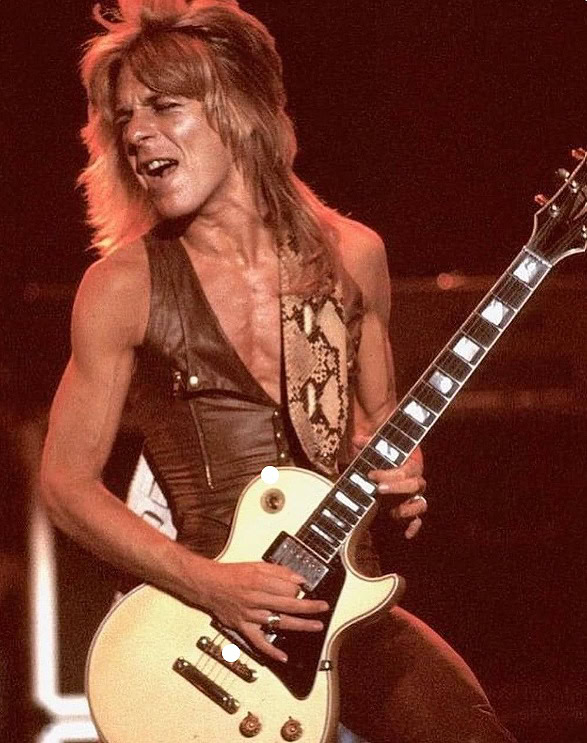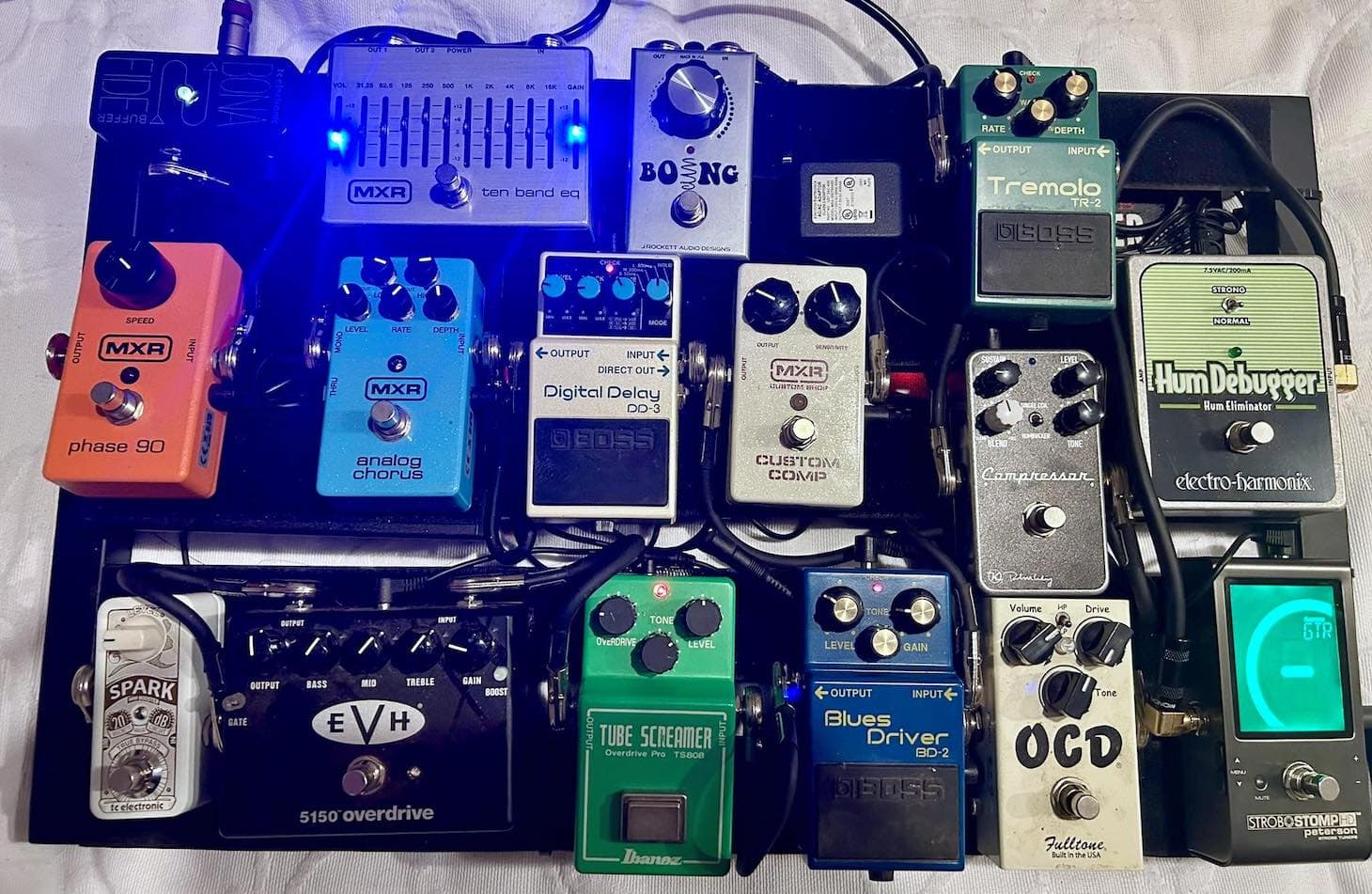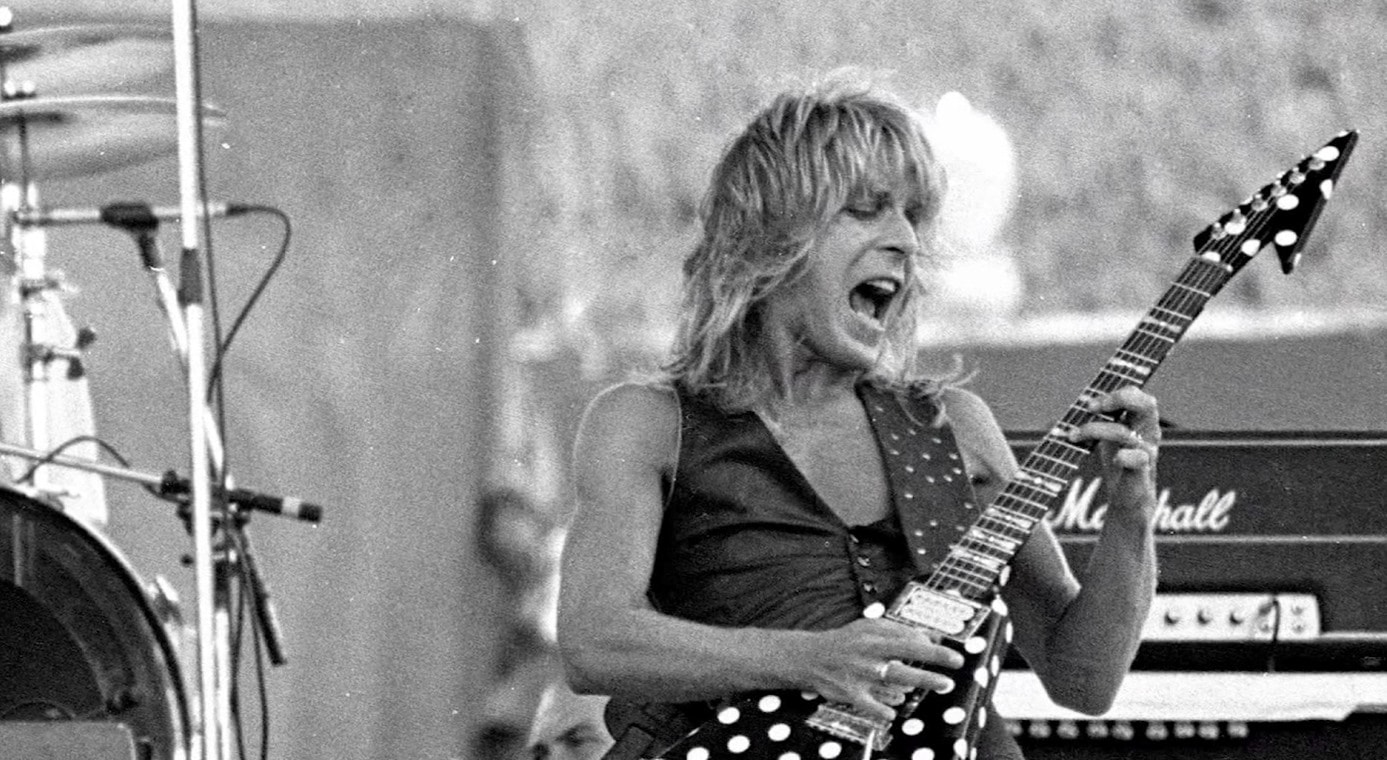Perhaps one of the most unique sounding guitarists since the inception of rock music was Randy Rhoads. Taken from life at a young age, he was ahead of his time in his playing and his tone. This is so much so that his legend lives on over 40 years later.
I’ll always remember the first time I heard Randy’s playing: “Diary of a Madman” ripped out of my earphones and into my soul back in high school. His combination of classical-influenced melodies and technical precision with full-bore heavy metal was truly something to behold.
Randy’s work with Ozzy Osbourne spanned only two albums: Blizzard of Ozz and Diary of a Madman. It’s testament to his influence on the instrument that the blistering solos from these two albums are a rite of passage for guitar players to this day.
Playing like Rhoads may be difficult, but it doesn’t have to be difficult to get his tone. I’m going to explore some gear and settings ideas that can help you achieve the iconic sound of the late Randy Rhoads.
Table of Contents
Guitars
It all has to start here. Cutting straight to the point, you’ll need a guitar with humbuckers. Unlike many of the shredders he inspired, Rhoads was not a strat guy – he was often seen with guitars like Gibson Les Pauls.

The enduring image of Randy in my head is his white Gibson Les Paul Custom. Randy Rhoads was so diminutive that this guitar looked huge on him!
For those, like me, without the budge for Gibson custom shop offerings, there’s an Epiphone version.
Randy also famously wielded a custom-made polka-dot Flying V. It wasn’t a big part of his studio arsenal, but it was a fixture of his touring rig. Check out this article on affordable Flying V style guitars if you want to own one on a budget.
Curiously, the shred-ready Jackson Rhoads V that bears his name wasn’t a guitar Randy played in the studio. He designed it with Jackson but, tragically, his untimely end came before he could take one to the studio. Randy did play an early prototype of this guitar, but not for long.
He leaned heavily towards the Gibson Flying V, appreciating its upper-fret access and aggressive tone. The 80s V would be a good bet, as would the Epiphone Kirk Hammett V.
Randy Rhoads also used aftermarket pickups in his guitars other than his beloved Les Paul Custom, which had its stock Gibson pickups still installed. He used the Seymour Duncan Jazz and Distortion pickups in his prototype Jacksons, and the early 80s favorite DiMarzio Super Distortion in his famous polka-dot V.
I would recommend any of these aftermarket pickups for any player not using a real Gibson Les Paul: Epiphone’s stock pickups simply aren’t hot enough to get in the zone for Randy’s tone.
Randy Rhoads’ Amp Settings (EQ) and Amps
Rhoads made good use of Marshall amp heads. He had his own special ordered Marshall 100 watt (the white Tolex one) and was known to use a JMP 59 super lead MKII during the recording sessions for Blizzard of Ozz.
Vintage and custom amps can be hard to come by, not to mention prohibitively expensive. Fortunately, the Marshall spirit can be found in most Marshall tube amps these days.
The Marshall Studio Vintage, despite its lower gain levels than, say, the Studio Classic or JCM800, is the closest affordable modern amp to Randy’s. No master volume, four input holes. That’s the trick.
It’s vital to “jump” the inputs with a patch cable and use the Normal and Bright volume controls to shape your tone. That’s how I use my Studio Vintage – it’s even covered in Randy-esque white Tolex!
This amp on its own won’t distort enough to get in the arena of Randy Rhoads’ playing. Rhoads himself used additional gain staging in the form of an early distortion pedal.
However, the right settings do help out a lot in getting close.
Marshall amps are naturally trebly and mid-forward. Randy had a lot of midrange in his sound, so I recommend the below settings.
- Presence: 5
- Bass: 2-3 (adjust to taste)
- Mids: 6
- Treble: 6
- Normal Volume: 4-6
- High Treble Volume: 2-4
Additionally, I love this sound for playing “Crazy Train”:
Presence: 5, Bass: 2, Middle: 6, Treble: 7, Volume I: 6, Volume II: 0
The two volume controls will sound best in a “sweet spot” on the amp. I find it’s usually between 4 and 6: enough saturation to distort, but not so much that the tone turns to mush. Every amp is different, however, and it’s important to experiment.
Often, I just move the knob and trust my ears. Randy himself actually ran his EQ quite flat!
On an amp with a gain control, set the gain relatively high. Otherwise, I rely on a distortion pedal for the aggressive preamp gain that defined the powerful sound of “Mr Crowley.”
Randy Rhoads’ Pedalboard
The pedals Rhoads used had a lot to do with how he got his sound. There are a few key pedals that are must-haves if you’re after his tone.
The heart of Rhoads’ extra gain came from an MXR Distortion Plus pedal that he used to drive his amps further into overdrive. This is crucial if you have a more vintage-style amp that doesn’t have quite as much gain as a modern amp.
Other drive pedals will work, but if you want to be as authentic as possible stick with the MXR. In any case, have the pedal set up to be relatively clean but with lots of output. I feel like the MXR Distortion Plus is the Randy Rhoads tone in a box: that’s how important it is to this sound.
I tend to run the output as hot as possible. All the way up, if I can get away with it without my guitar feeding back. I set the drive, however, lower, to 4, or 3, depending on how hot my pickups are.
If the drive pedal is the heart, then the MXR Ten Band Graphic EQ is the soul. Run this pedal AFTER the drive pedal, and set it up for a nice boost at 500 Hz and 1k Hz. This is where a lot of the extra mids in Rhoads’ sound came from.
An “honorable mention” is in order, because one of the most famous songs Rhoads played was “Crazy Train”. What often sounds like a chorus pedal in Randy’s solos, such as the legendary solo from “Crazy Train,” was actually the man himself double-tracking his solos on the same guitar, slightly detuned. I can’t play two guitars at once like Michael Angelo Batio, so I have to use a chorus pedal.
It’s actually why Zakk Wylde, who later joined Ozzy’s band as lead guitarist, started using a chorus effect in the first place!
I am partial to the MXR analog chorus. Drop the lows a little, and boost the highs slightly. Keep the rate down below 10 o’clock and the depth no higher than noon. Run this in the effects loop if you can, but after the drive and EQ if not. In that case, set the depth a little higher to compensate.

Trust Your Ears
Most of Randy Rhoads’ tone was in his playing and note choices. His pick attack and and consistent application of the full major and minor scales – particularly harmonic minor and flattened sixths – comprise the bulk of his sound.
To this day, I can play the intro riff from “Crazy Train” on any distorted guitar and other players recognize it immediately. However, with a Les Paul, a Marshall, and an MXR Distortion Plus, I can channel a little bit of Randy’s spirit.
As with any sound you’re after, your ears are the ultimate judge. Listen to your favorite Rhoads’ songs and then play through your setup to see how close you can get. Experiment, play loud, and most importantly: have fun!


Thanks man. This helped a lot!